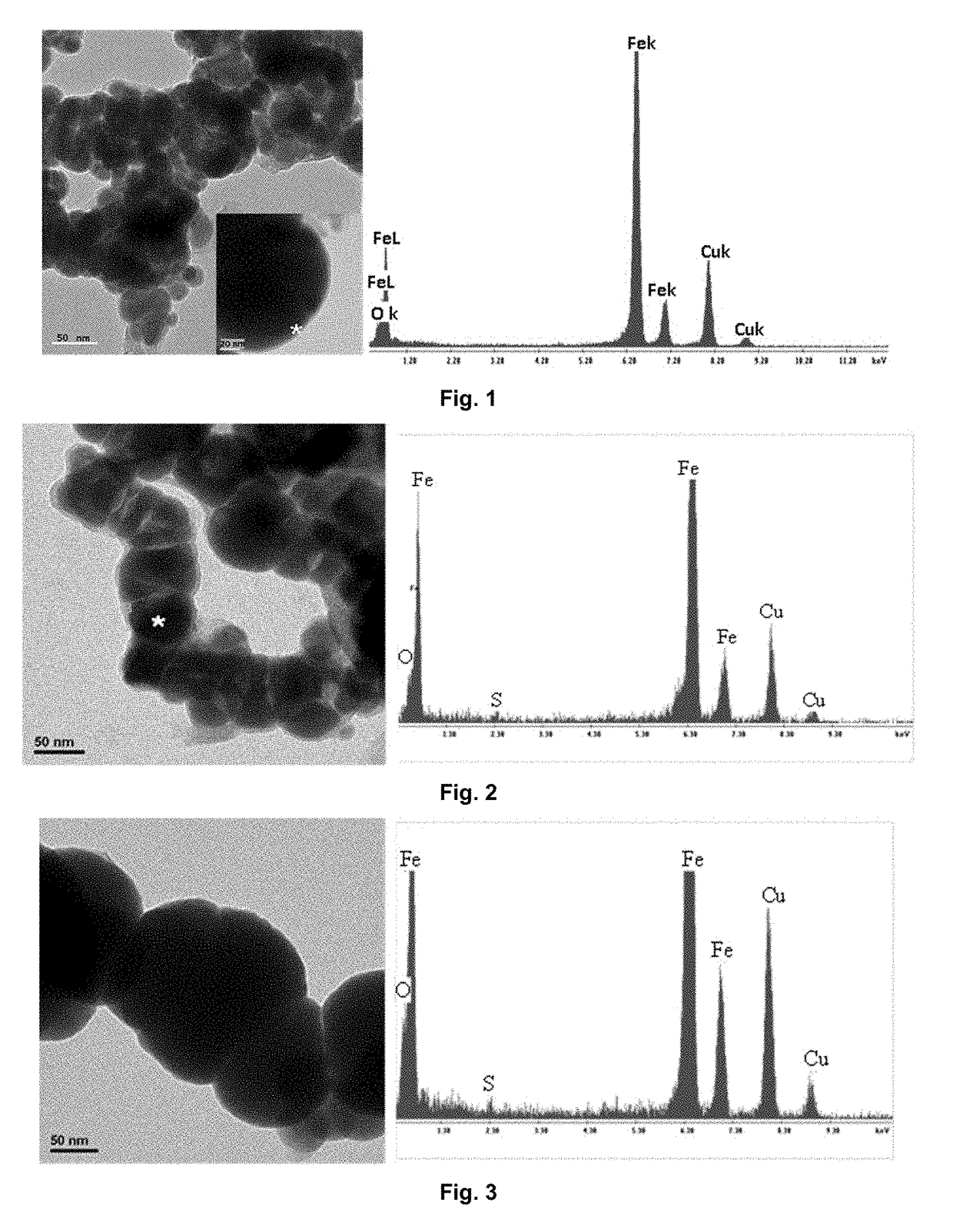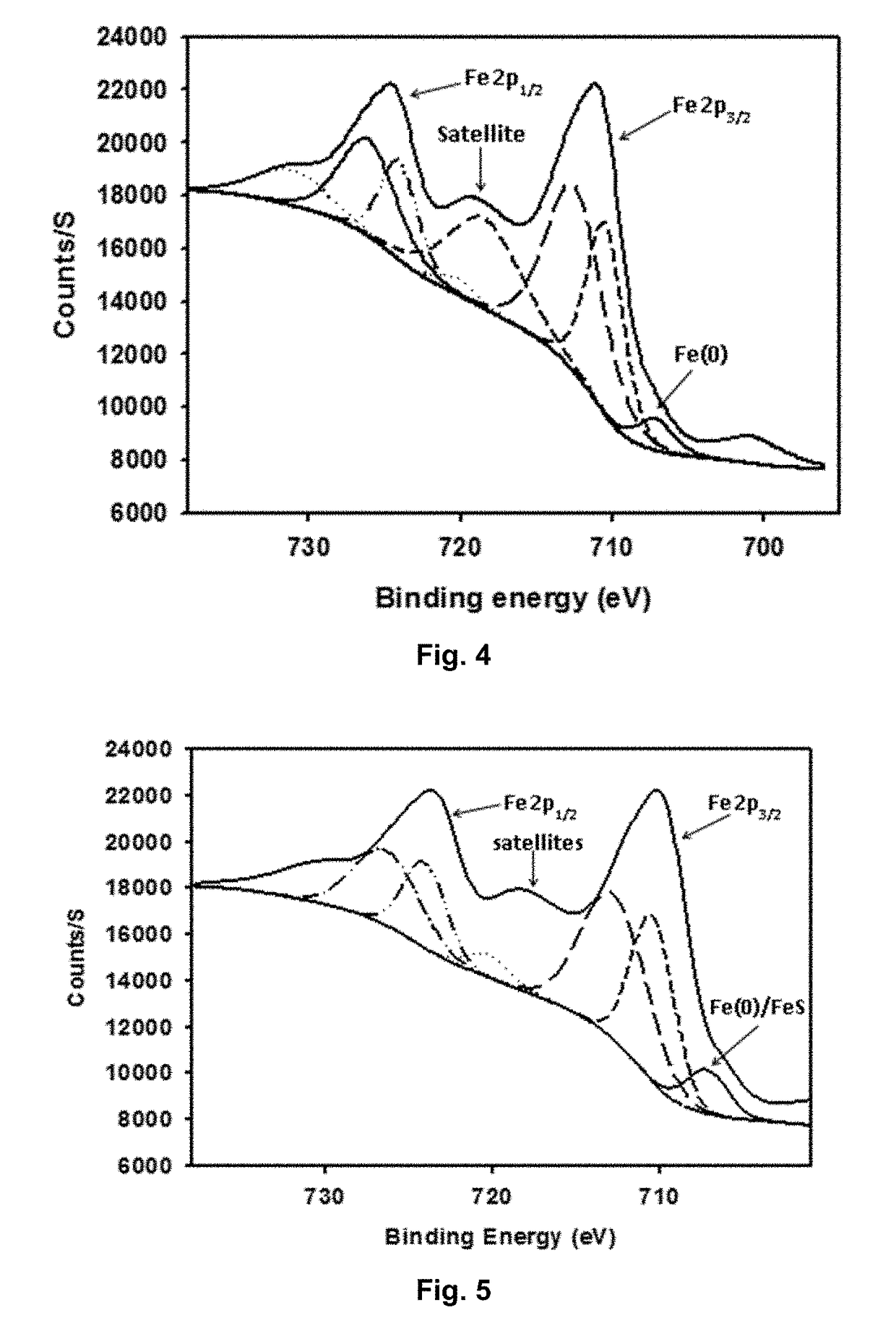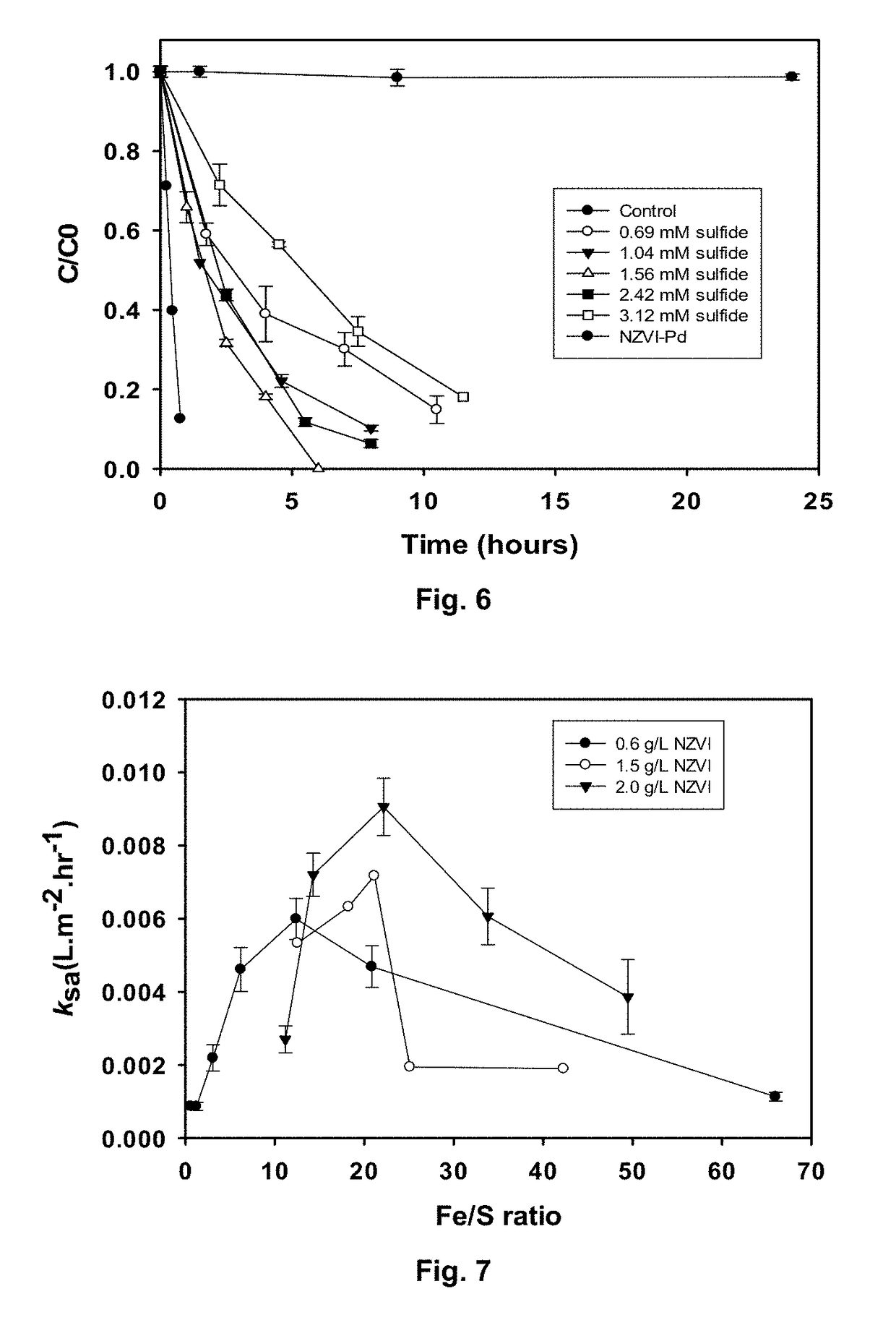Sulfidated nanoscale zerovalent iron and method of use thereof
a technology of zero-valent iron and nano-scale, which is applied in the direction of water treatment compounds, transportation and packaging, and contaminated groundwater/leachate treatment, etc., can solve the problems of large-scale soil and groundwater contamination and significant potential to pollute large-scale groundwater
- Summary
- Abstract
- Description
- Claims
- Application Information
AI Technical Summary
Benefits of technology
Problems solved by technology
Method used
Image
Examples
example i
NZVI Synthesis and Sulfidation
[0068]Ferrous sulfate heptahydrate (99%), sodium borohydride (98.5%), palladium acetate and sodium sulfide (99%) used for preparation of NZVI, NZVI-Pd and sulfidated NZVI were purchased from Sigma-Aldrich. Concentrated HCl (37% w / w) and methanol (HPLC grade) were purchased from Fisher Scientific. Deionised water, methanol and other solutions were deoxygenated prior to reaction by bubbling nitrogen gas.
[0069]The NZVI synthesis procedure was adapted from Liu et al. (2005, Environmental Science & Technology, 39: 1338-1345). An aqueous solution of 0.07 M FeSO4. 7H2O (in 30% methanol) was continuously mixed, while 0.019 M NaBH4 was added drop-wise using a syringe pump, followed by an hour of mixing. The resulting NZVI suspension was washed three times with methanol and dried under nitrogen. The washed NZVI was stored in sealed vials under a N2 atmosphere before use.
[0070]Sulfidated NZVI was prepared by sonicating (Cole-Palmer 8891 ultrasonicator, 40 kHz) an ...
example ii
TCE Degradation Experiments
[0071]TCE degradation experiments were conducted in batch reactors comprised of 63 mL screw capped Mininert® vials (VICI) containing 37 mL of an aqueous suspension of bare NZVI or sulfidated NZVI (0.6, 1.5 or 2.0 g / L) or Pd-NZVI (0.10 g / L). TCE degradation was initiated by adding TCE from a methanolic stock solution to provide 0.11 mM TCE in the nanoparticle suspensions. The reaction vials were set-up in triplicates and continuously mixed using an orbital shaker at 300 rpm at 22±2° C. The headspace was periodically sampled for Gas Chromatograph-Flame Ionization Detector (GC-FID) analysis of TCE and the degradation products acetylene, ethene, and ethane. Several vials containing aqueous suspensions of NZVI or sulfidated NZVI were analyzed for H2 evolution by analyzing headspace samples using a GC-TCD (thermocouple detector).
[0072]Additional TCE degradation experiments with NZVI and sulfidated NZVI were conducted with different aqueous chemistry conditions a...
example iii
Particle Characterization
[0074]Nanoparticle tracking analysis (NTA) and Dynamic Light Scattering (DLS) were used to measure the particle sizes of unamended and sulfidated NZVI in aqueous suspensions. The NTA measurements were carried out by injecting a diluted sample (20 mg / L) into the sample chamber of NanoSight LM14. In addition, particle size was measured using Dynamic light scattering (DLS) and electrophoretic mobility was measured by laser Doppler velocimetry by as ZetaSizer Nano, Malvern.
[0075]TEM imaging of NZVI and sulfidated NZVI was conducted with aqueous suspensions (10 mg / L) placed on copper TEM grids which were dried overnight. Samples were then analysed for their size and morphology on a Philips CM 200 TEM at an accelerating voltage of 200 kV. X-ray counts were obtained using AMT XR41B CCD Camera System and EDS Genesis EDS in bright field mode.
[0076]X-ray photoelectron spectroscopy (XPS) studies were performed for NZVI and sulfidated NZVI using a VG Escalab 3MKII instr...
PUM
| Property | Measurement | Unit |
|---|---|---|
| molar ratio | aaaaa | aaaaa |
| molar ratio | aaaaa | aaaaa |
| hydrodynamic diameter | aaaaa | aaaaa |
Abstract
Description
Claims
Application Information
 Login to View More
Login to View More - R&D
- Intellectual Property
- Life Sciences
- Materials
- Tech Scout
- Unparalleled Data Quality
- Higher Quality Content
- 60% Fewer Hallucinations
Browse by: Latest US Patents, China's latest patents, Technical Efficacy Thesaurus, Application Domain, Technology Topic, Popular Technical Reports.
© 2025 PatSnap. All rights reserved.Legal|Privacy policy|Modern Slavery Act Transparency Statement|Sitemap|About US| Contact US: help@patsnap.com



